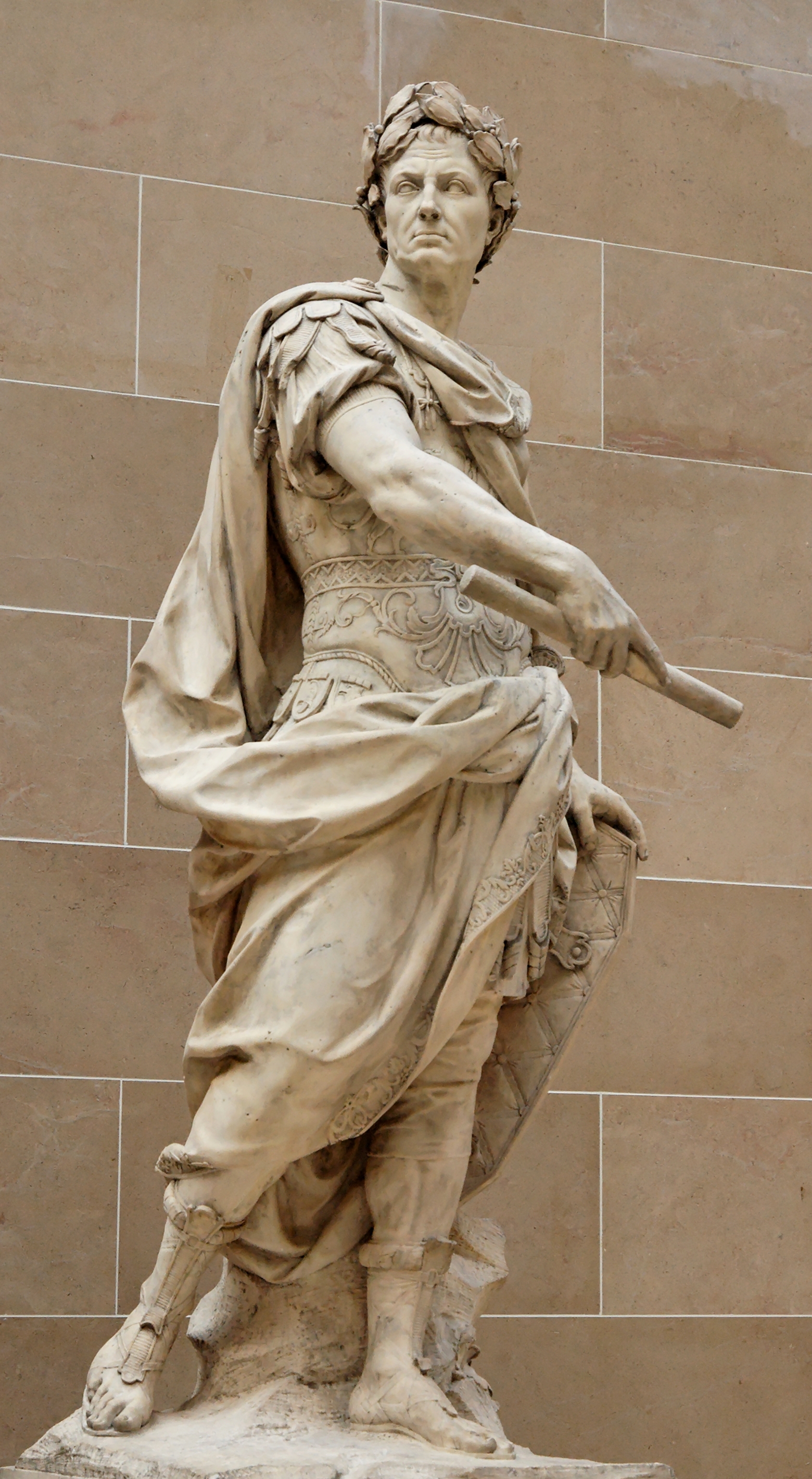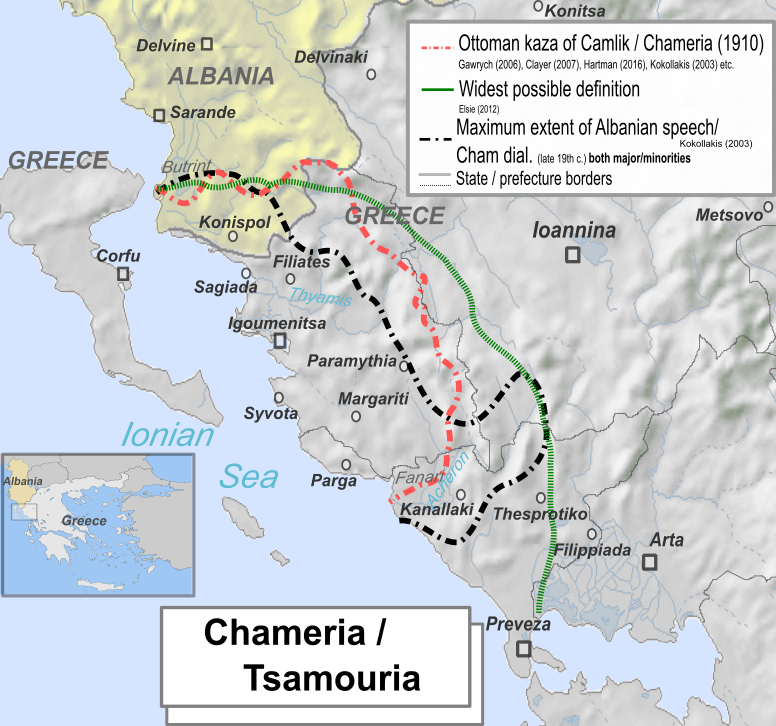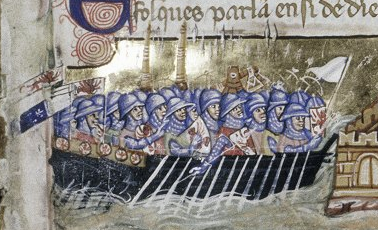|
Mourtos
Syvota (, , before 1927: Βώλια - ''Volia'', 1927-1940: Μούρτος - ''Mourtos'') is a village and a former municipality in Thesprotia, Epirus, Greece. Since the 2011 local government reform it is part of the municipality Igoumenitsa, of which it is a municipal unit. The municipal unit has an area of 72.439 km2. The population in 2021 was 1,089 for the village, and 2,693 for the municipal unit. The municipal unit has four main settlements: Syvota, Argyrotopos, Faskomilia, and Plataria. The seat of the municipality was in Plataria. History The earliest recorded inhabitants of the region are the Thesprotians, a Greek tribe of Epirus. In antiquity, the location was called Sybota and was the site of the Battle of Sybota. During the Middle Ages, Syvota, like the rest of Epirus, was part of the Byzantine Empire and the Despotate of Epirus, the Republic of Venice and in the 15th century it became part of the Ottoman Empire. The first local Muslims of Syvota are recorded in A ... [...More Info...] [...Related Items...] OR: [Wikipedia] [Google] [Baidu] |
Igoumenitsa
Igoumenitsa () is a coastal city in northwestern Greece. It is the capital of the regional unit of Thesprotia. Igoumenitsa is the chief port of Thesprotia and Epirus, and one of the largest passenger ports of Greece, connecting northwestern Mainland Greece with the Ionian Islands and Italy. The city is built on the easternmost end of the Gulf of Igoumenitsa in the Ionian Sea and primary aspects of the economy are maritime, transport, services, agriculture and tourism. The long A2 motorway (Greece), A2 motorway (Egnatia Odos), which serves northern Greece, terminates at Igoumenitsa, making it a popular starting point for tourists coming from Europe and ending point for trucks from Turkey. Igoumenitsa features many shops, schools, offices and cargo storages, a university department, a library, an archeological museum, several sport stadiums and tennis courses, a courthouse and a medical clinic. The Thesprotia Police Headquarters and the Municipal Sailing Club are located here. The ... [...More Info...] [...Related Items...] OR: [Wikipedia] [Google] [Baidu] |
Epirus (region)
Epirus ( ; , ) is a traditional geographic regions of Greece, geographic and modern administrative regions of Greece, administrative region in northwestern Greece.Π.Δ. 51/87 "Καθορισμός των Περιφερειών της Χώρας για το σχεδιασμό κ.λ.π. της Περιφερειακής Ανάπτυξης" (''Determination of the Regions of the Country for the planning etc. of the development of the regions, Efimeris tis Kyverniseos ΦΕΚ A 26/06.03.1987'' It borders the regions of Western Macedonia and Thessaly to the east, West Greece to the south, the Ionian Sea and Ionian Islands (region), Ionian Islands to the west and Albania to the north. The region has an area of about . It is part of the wider historical region of Epirus, which overlaps modern Albania and Greece but lies mostly within Greek territory. Geography and ecology Greek Epirus, like the region as a whole, is rugged and mountainous. It comprises the land of the ancient Moloss ... [...More Info...] [...Related Items...] OR: [Wikipedia] [Google] [Baidu] |
Despotate Of Epirus
The Despotate of Epirus () was one of the Greek Rump state, successor states of the Byzantine Empire established in the aftermath of the Fourth Crusade in 1204 by a branch of the Angelos dynasty. It claimed to be the legitimate successor of the Byzantine Empire during the subsequent struggle for Constantinople, along with the Empire of Nicaea and the Empire of Trebizond; its rulers briefly proclaiming themselves as Emperors in 1227–1242 (during which it is most often called the Empire of Thessalonica). The term "Despotate of Epirus" is, like "Byzantine Empire" itself, a modern historiographic convention and not a name in use at the time. The Despotate was centred on the region of Epirus, encompassing also Albania and the western portion of Greek Macedonia and also included Thessaly and western Greece as far south as Nafpaktos. Through a policy of aggressive expansion under Theodore Komnenos Doukas the Despotate of Epirus also briefly came to incorporate central Macedonia (regi ... [...More Info...] [...Related Items...] OR: [Wikipedia] [Google] [Baidu] |
Regime Of The Colonels
In politics, a regime (also spelled régime) is a system of government that determines access to public office, and the extent of power held by officials. The two broad categories of regimes are democratic and autocratic. A key similarity across all regimes is the presence of rulers of both formal and informal institutions, which interact dynamically to adapt to changes to their environment The CIA World Factbook also has a complete list of every country in the world with their respective types of regimes. Usage According to Yale professor Juan José Linz there are three main types of political regimes today: democracies, totalitarian regimes, and authoritarian regimes, with hybrid regimes sitting between these categories. The term regime is often used critically to portray a leader as corrupt or undemocratic. While the term originally referred to any type of government, in modern usage it often has a negative connotation, implying authoritarianism or dictatorship. ... [...More Info...] [...Related Items...] OR: [Wikipedia] [Google] [Baidu] |
Population Exchange Between Greece And Turkey
The 1923 population exchange between Greece and Turkey stemmed from the "Convention Concerning the Exchange of Greek and Turkish Populations" signed at Lausanne, Switzerland, on 30 January 1923, by the governments of Greece and Turkey. It involved at least 1.6 million people (1,221,489 Greek Orthodox from Asia Minor, Eastern Thrace, the Pontic Alps and the Caucasus, and 355,000–400,000 Muslims from Greece), most of whom were forcibly made refugees and ''de jure'' denaturalized from their homelands. On 16 March 1922, Turkish Minister of Foreign Affairs Yusuf Kemal Tengrişenk stated that " e Ankara Government was strongly in favour of a solution that would satisfy world opinion and ensure tranquillity in its own country", and that " was ready to accept the idea of an exchange of populations between the Greeks in Asia Minor and the Muslims in Greece". Eventually, the initial request for an exchange of population came from Eleftherios Venizelos in a letter he submitted to th ... [...More Info...] [...Related Items...] OR: [Wikipedia] [Google] [Baidu] |
League Of Nations
The League of Nations (LN or LoN; , SdN) was the first worldwide intergovernmental organisation whose principal mission was to maintain world peace. It was founded on 10 January 1920 by the Paris Peace Conference (1919–1920), Paris Peace Conference that ended the World War I, First World War. The main organisation ceased operations on 18 April 1946 when many of its components were relocated into the new United Nations (UN) which was created in the aftermath of the World War II, Second World War. As the template for modern global governance, the League profoundly shaped the modern world. The League's primary goals were stated in its Covenant of the League of Nations, eponymous Covenant. They included preventing wars through collective security and Arms control, disarmament and settling international disputes through negotiation and arbitration. Its other concerns included labour conditions, just treatment of native inhabitants, Human trafficking, human and Illegal drug tra ... [...More Info...] [...Related Items...] OR: [Wikipedia] [Google] [Baidu] |
Cham Albanians
Cham Albanians or Chams (; , ), are a sub-group of Albanians who originally resided in the western part of the region of Epirus in southwestern Albania and northwestern Greece, an area known among Albanians as Chameria. The Chams have their own particular cultural identity within Albanian sub-groups. A number of Chams contributed to the Albanian National Awakening, Albanian national identity and played an important role in starting the renaissance of the Albanian culture in the 19th century. The Chams speak their own Albanian dialects, dialect of the Albanian language, the Cham Albanian dialect, which is a Southern Tosk Albanian dialect and one of the two most conservative ones; the other being Arvanitika. During the late 1930s Chams suffered from intimidation and persecution under the 4th of August Regime, dictatorship of General Ioannis Metaxas, Metaxas. Following the Italian invasion of Albania, Italian occupation of Albania in 1939, the Chams became a prominent propaganda t ... [...More Info...] [...Related Items...] OR: [Wikipedia] [Google] [Baidu] |
Greek War Of Independence
The Greek War of Independence, also known as the Greek Revolution or the Greek Revolution of 1821, was a successful war of independence by Greek revolutionaries against the Ottoman Empire between 1821 and 1829. In 1826, the Greeks were assisted by the British Empire, Bourbon Restoration in France, Kingdom of France, and the Russian Empire, while the Ottomans were aided by their vassals, especially by the Eyalet of Egypt. The war led to the formation of modern Greece, which would be expanded to its modern size in later years. The revolution is celebrated by Greek diaspora, Greeks around the world as Greek Independence Day, independence day on 25 March. All Greek territory, except the Ionian Islands, the Mani Peninsula, and mountainous regions in Epirus, came under Ottoman rule in the 15th century. During the following centuries, there were Ottoman Greece#Uprisings before 1821, Greek uprisings against Ottoman rule. Most uprisings began in the independent Greek realm of the Mani Pe ... [...More Info...] [...Related Items...] OR: [Wikipedia] [Google] [Baidu] |
Balkan Wars
The Balkan Wars were two conflicts that took place in the Balkans, Balkan states in 1912 and 1913. In the First Balkan War, the four Balkan states of Kingdom of Greece (Glücksburg), Greece, Kingdom of Serbia, Serbia, Kingdom of Montenegro, Montenegro and Kingdom of Bulgaria, Bulgaria declared war upon the Ottoman Empire and defeated it, in the process stripping the Ottomans of their European provinces, leaving only East Thrace, Eastern Thrace under Ottoman control. In the Second Balkan War, Bulgaria fought against the other four combatants of the first war. It also faced an attack from Kingdom of Romania, Romania from the north. The Ottoman Empire lost the bulk of its territory in Europe. Although not involved as a combatant, Austria-Hungary became relatively weaker as a much enlarged Serbia pushed for union of the South Slavs, Slavic peoples. The war set the stage for the July Crisis, July crisis of 1914 and as a prelude to the First World War. By the early 20th century, Bul ... [...More Info...] [...Related Items...] OR: [Wikipedia] [Google] [Baidu] |
Ottoman Empire
The Ottoman Empire (), also called the Turkish Empire, was an empire, imperial realm that controlled much of Southeast Europe, West Asia, and North Africa from the 14th to early 20th centuries; it also controlled parts of southeastern Central Europe, between the early 16th and early 18th centuries. The empire emerged from a Anatolian beyliks, ''beylik'', or principality, founded in northwestern Anatolia in by the Turkoman (ethnonym), Turkoman tribal leader Osman I. His successors Ottoman wars in Europe, conquered much of Anatolia and expanded into the Balkans by the mid-14th century, transforming their petty kingdom into a transcontinental empire. The Ottomans ended the Byzantine Empire with the Fall of Constantinople, conquest of Constantinople in 1453 by Mehmed II. With its capital at History of Istanbul#Ottoman Empire, Constantinople (modern-day Istanbul) and control over a significant portion of the Mediterranean Basin, the Ottoman Empire was at the centre of interacti ... [...More Info...] [...Related Items...] OR: [Wikipedia] [Google] [Baidu] |
Republic Of Venice
The Republic of Venice, officially the Most Serene Republic of Venice and traditionally known as La Serenissima, was a sovereign state and Maritime republics, maritime republic with its capital in Venice. Founded, according to tradition, in 697 by Paolo Lucio Anafesto, over the course of its History of the Republic of Venice, 1,100 years of history it established itself as one of the major European commercial and naval powers. Initially extended in the ''Dogado'' area (a territory currently comparable to the Metropolitan City of Venice), during its history it annexed a large part of Northeast Italy, Istria, Dalmatia, the coasts of present-day Montenegro and Albania as well as numerous islands in the Adriatic Sea, Adriatic and eastern Ionian Sea, Ionian seas. At the height of its expansion, between the 13th and 16th centuries, it also governed Crete, Cyprus, the Peloponnese, a number of List of islands of Greece, Greek islands, as well as several cities and ports in the eastern Me ... [...More Info...] [...Related Items...] OR: [Wikipedia] [Google] [Baidu] |
Battle Of Sybota
The Battle of Sybota () took place in 433 BC between Corcyra (modern Corfu) and Corinth. It was one of the immediate catalysts for the Peloponnesian War. History Corinth had been in dispute with Corcyra, an old Corinthian colony which no longer wanted to remain under Corinthian influence (see Affair of Epidamnus for background). Corcyra, which had the third largest navy in Greece at the time, allied itself with Athens, an enemy of Corinth (as Corinth was allied with Sparta). Athens sent ten ships to Corcyra to reinforce the Corcyraean fleet, with instructions not to fight the Corinthian fleet unless they attempted to land on the island. Corinth, meanwhile, assembled a fleet of ships under the command of Xenoclides and prepared to sail to Corcyra. Corcyra gathered a fleet under Miciades, Aisimides and Eurybatus, who made the Sybota islands their base of operations. The Athenian commanders, Lacedaimonius (the son of Cimon), Diotimus, and Proteas, sailed with them. Corcyra had 1 ... [...More Info...] [...Related Items...] OR: [Wikipedia] [Google] [Baidu] |










